A Photo Essay
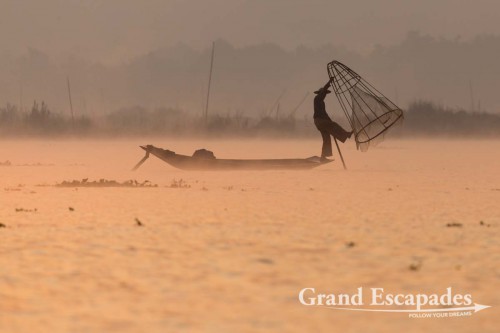
Fishermen on Inle Lake, Myanmar – Them rowing their boats with one leg contributed to making the lake a legend. This technique allows them to throw / pull their nets with both hands.
It was brighter than what we had expected, the sun was about to rise, when we boarded the boat at 06:30 am. Despite four layers of clothes and blankets, the clammy air was penetrating our body, when the boat raced through the channels leading towards Inle Lake. Mist was climbing from the water. We could hardly see a thing, hoping the boat driver would…
Finally we reached the very lake. The dark grey, mirror-like surface of the water was merging with the misty horizon. The elusive shapes of the fishermen came into view. Them rowing their boats with one leg contributed to making the lake a legend. This technique allows them to throw / pull their nets with both hands. The rising sun added a red yellowish touch to this surreal atmosphere….
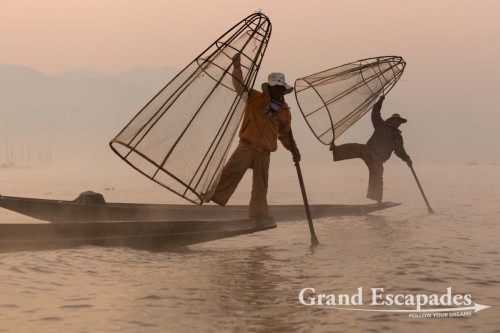
Fishermen on Inle Lake, Myanmar – Them rowing their boats with one leg contributed to making the lake a legend. This technique allows them to throw / pull their nets with both hands.
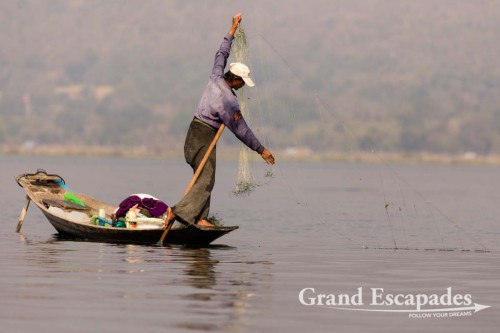
Fishermen on Inle Lake, Myanmar – Them rowing their boats with one leg contributed to making the lake a legend. This technique allows them to throw / pull their nets with both hands.
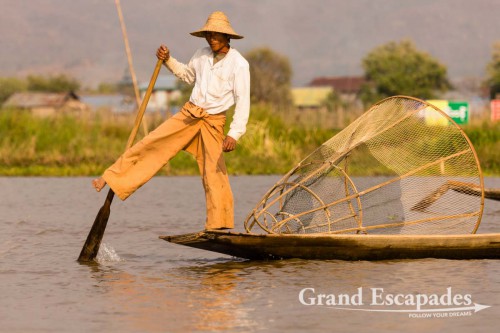
Fishermen on Inle Lake, Myanmar – Them rowing their boats with one leg contributed to making the lake a legend. This technique allows them to throw / pull their nets with both hands.
It was this amazing atmosphere that made us repeat this trip again and again, in total three times. Apart from these stunning early hours out on the lake, there is a lot to discover on and around Inle Lake!
Five-Day Market
The five villages on the shore of Lake Inle take turns, so there is actually a market each day of the week. The more popular one, Taunggyi Floating Market (also called Ywama), is now quite crowded, as it is close to the hotels catering to large tour groups. The most remote one at Kyauk Dain Village hardly sees a tourist. The three days on Inle Lake, we managed to visit the Floating Market at Taunggyi (or Ywama), at Paya Phaung Daw Oo and Inthein Market. Early in the morning, we were the only foreigners. That changed around at 08:30 am, when the first tourists arrived and by 09:30 it was time to retreat to a coffee shop and watch the locals doing their shopping.
Those markets are a mix of traditional rural markets offering everything for your daily needs, but also an increasing number of souvenir stalls, to address the rapidly growing number of tourists. The majority of women still wear traditional clothes, creating amazing photo opportunities…
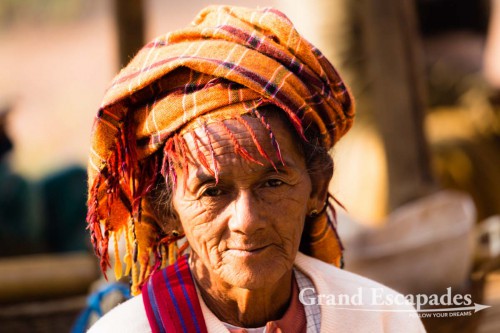
5-Day Market on Inle Lake, Myanmar – The five villages on the shore of Lake Inle take turns, so there is actually a market each day of the week.
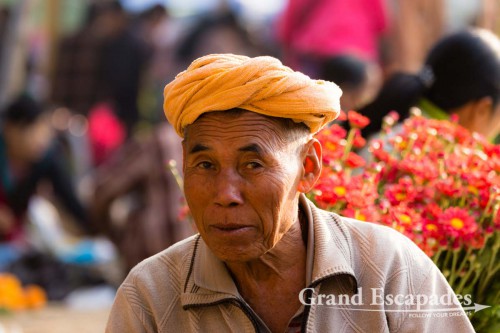
5-Day Market on Inle Lake, Myanmar – The five villages on the shore of Lake Inle take turns, so there is actually a market each day of the week.
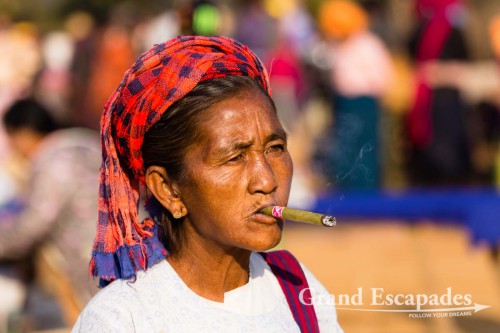
5-Day Market on Inle Lake, Myanmar – The five villages on the shore of Lake Inle take turns, so there is actually a market each day of the week.
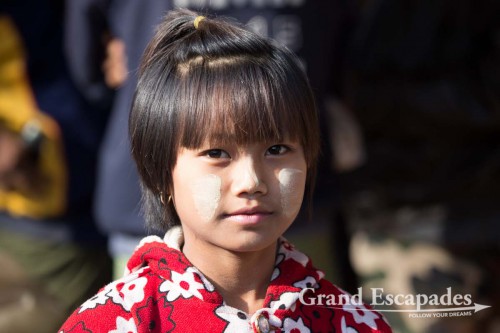
5-Day Market on Inle Lake, Myanmar – The five villages on the shore of Lake Inle take turns, so there is actually a market each day of the week.
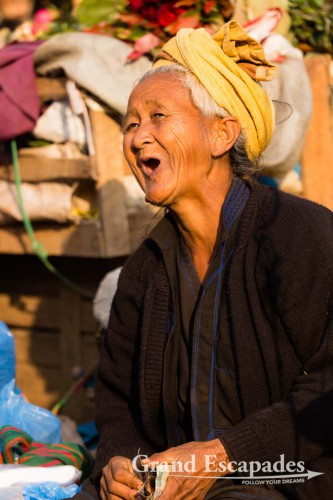
5-Day Market on Inle Lake, Myanmar – The five villages on the shore of Lake Inle take turns, so there is actually a market each day of the week.
Traditional craftsmanship
Villages around the lake specialize in specific craftsmanship – the production remains highly traditional. We were surprised that only very few tourists were interested to see such expertise. What a warm welcome we had! People were so pleased that foreigners showed such sincere interest in their trade. We even decided against taking pictures to allow the little interaction we had – with no common language – not to be disrupted. We more or less managed to understand what was going on…
The Pottery Village at Kyauk Dain was our first stop. At the Black Smith Village, we were surprised by women doing the hardest work: beating the metal. The family of our boat driver lived at the Brown Sugar Making Village. The Boat Making was really touristy. The Bamboo Hat Making, the Silk & Lotus Waving were even more touristy.
Floating Villages & Floating Gardens
The floating villages on Inle Lake were very different to those at Halong Bay in Vietnam or on Tonlé Sap in Cambodia. First of all, they are no floating villages, properly speaking: on endlessly long, thin stilts, sit huts made of bamboo mats, wood or sometimes corrugated iron. Probably more surprising was that many of those houses look solid and stable, and are actually quite big!
Floating gardens were quite a sight – farmers were moving through their fields… on boats… There, they grow all kinds of vegetables, and eventually sell those on the markets.
Stupas & Monasteries
There are many Stupas / Payas / Monasteries around Lake Inle. Some are extremely popular, some are completely empty…
We visited Thaung Tut, Paya Phaung Daw Oo, Kyaung Nga Hpe (No Longer Jumping Cat Monastery, but very interesting nonetheless) and last but not least Paya Shwe Inn Thein (with its stunning Stupa Forest).
Fishermen
The most famous sight of Inle Lake are those fishermen dressed with beige trousers and white shirts, rowing with one leg and using conic bamboo net to fish. A beautiful, almost surreal sight early morning in the mist! However, this will unfortunately most likely very soon disappear, as those fishermen seem to be catching extremely few fishes: we actually hardly saw one fish in their nets… Obviously, the excessive use of chemical fertilizers on the floating gardens is now taking its toll on the biodiversity of the lake.
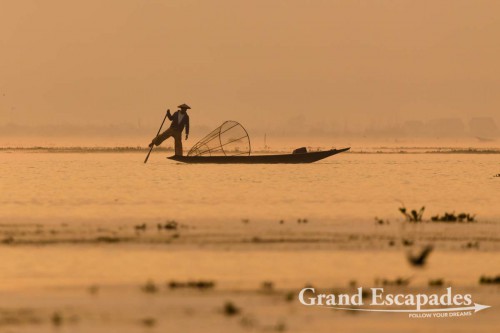
Fishermen on Inle Lake, Myanmar – Them rowing their boats with one leg contributed to making the lake a legend. This technique allows them to throw / pull their nets with both hands.
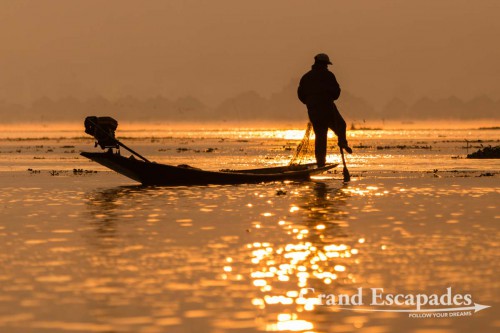
Fishermen on Inle Lake, Myanmar – Them rowing their boats with one leg contributed to making the lake a legend. This technique allows them to throw / pull their nets with both hands.
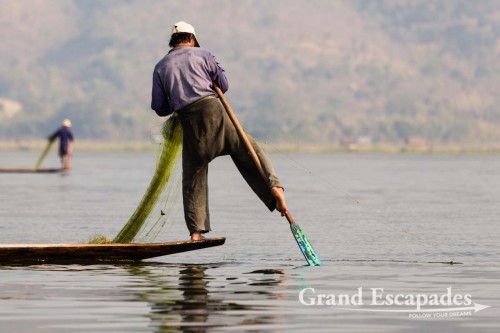
Fishermen on Inle Lake, Myanmar – Them rowing their boats with one leg contributed to making the lake a legend. This technique allows them to throw / pull their nets with both hands.
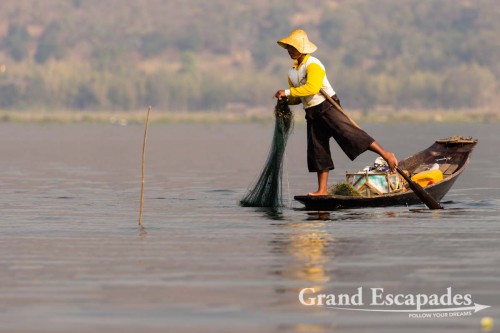
Fishermen on Inle Lake, Myanmar – Them rowing their boats with one leg contributed to making the lake a legend. This technique allows them to throw / pull their nets with both hands.
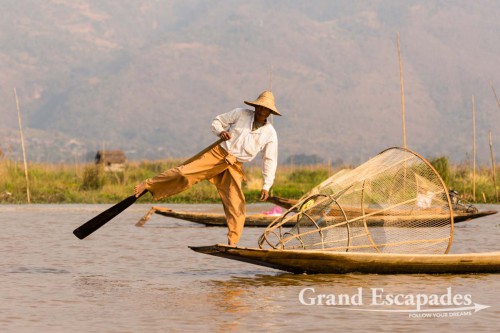
Fishermen on Inle Lake, Myanmar – Them rowing their boats with one leg contributed to making the lake a legend. This technique allows them to throw / pull their nets with both hands.
A few practical information…
Hotels around Inle Kale are absurdly expensive (look at 150 to 300 USD a night), so most independent tarvelers end up in Nyaungshwe. This nondescript small town is going through a massive development, with tall hotels popping up from the ground like mushrooms. But this is definitely a good base for exploring Inle Lake, that can be reach via a channel in 15 minutes by boat.
Needless to say a boat is a must to explore the lake. Travel agency and hotels help with organizing. Fishermen and boat drivers will approach you as soon as you arrive. They are not pushy and know the area very well. We paid 28 USD for a day going to the remote southern tip of the lake (Pottery Village of Kyauk Dain). A smaller circuit was 18 USD a day. Our request “no souvenir shop” was clearly understood and respected.
This is all in all fairly easy. And with a few fellow travelers hanging around, we could have found people to share a boat and cut costs (there are up to 5 seats on a boat), if we had wanted to…
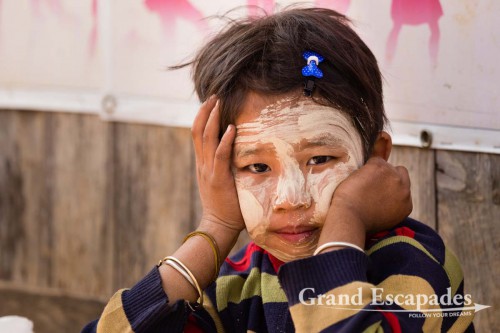
5-Day Market on Inle Lake, Myanmar – The five villages on the shore of Lake Inle take turns, so there is actually a market each day of the week.
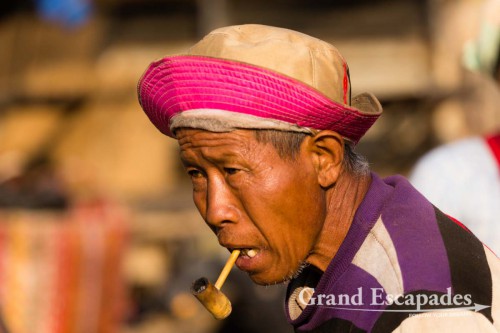
5-Day Market on Inle Lake, Myanmar – The five villages on the shore of Lake Inle take turns, so there is actually a market each day of the week.

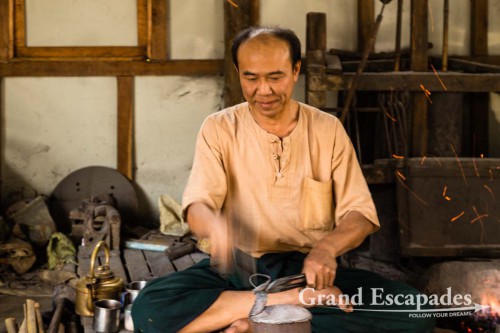
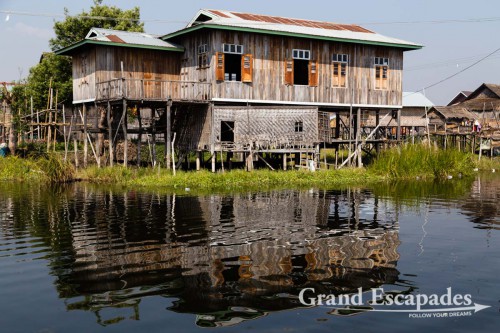
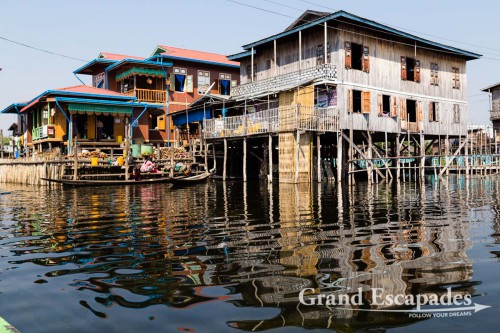
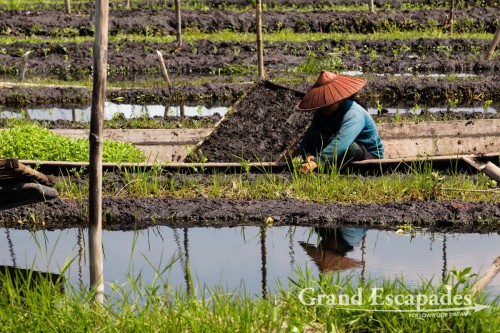
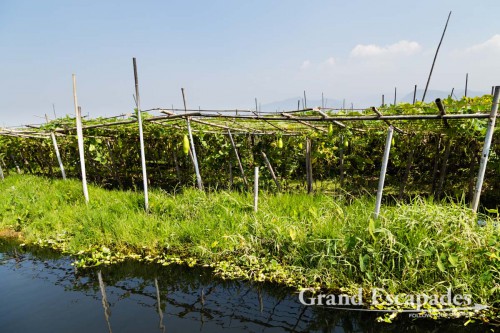
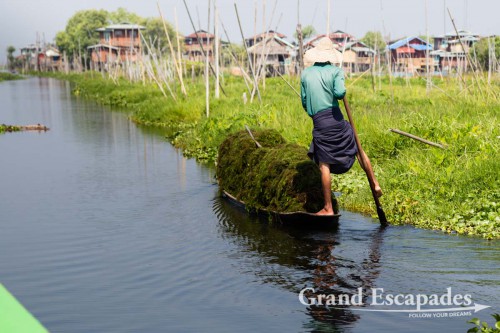
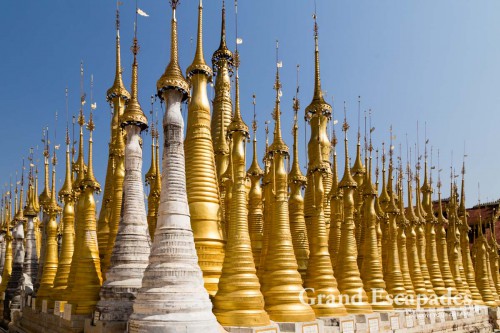
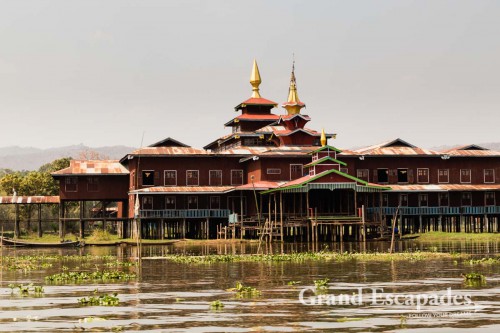
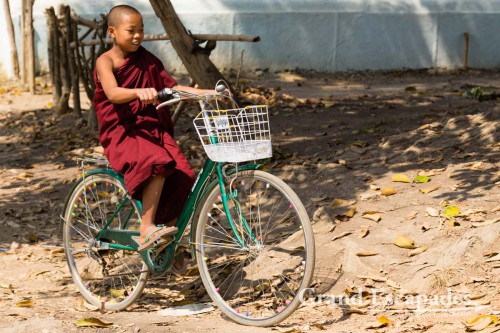
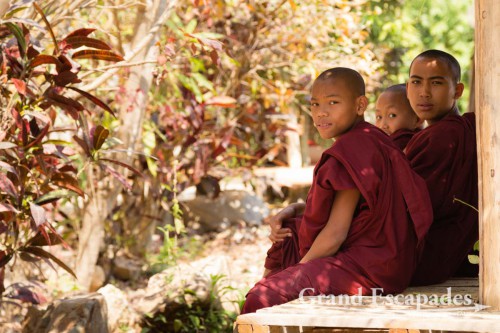
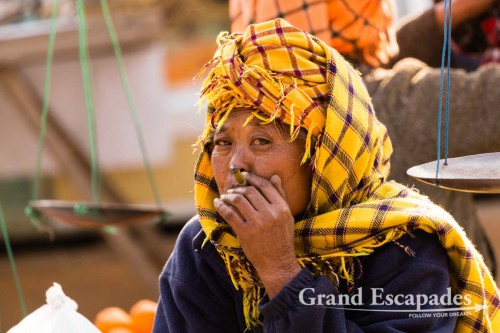
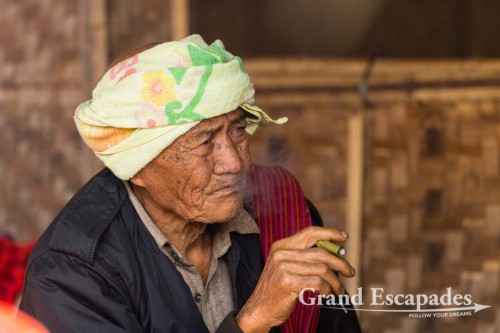
Nice photos, we skipped out on the lake tour due to the fisherman not really fishing but just there to charge for photos. You had to pay a lot but worth it. We hiked three days to get to inle lake and it is something i would tell anyone to do.
Actually, the nicest photos (by far) were not those of fishermen posing, but those of fishermen actually fishing at dawn (a strong tele is of much use, that is a fact…).
I haven’t been hiking, so I cannot say.
But the 3 trips on the lake were spectacular.
Cheers, Gilles